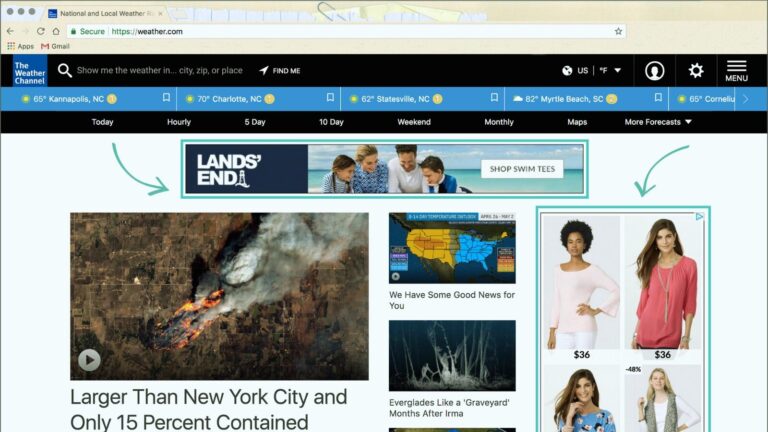
How Local SEO Will Transform Your Business
Have you ever wanted something and then searched for it on Google to be presented with local options for the item you were searching for? That is Local SEO (Search Engine Optimization) at work. Optimizing your website for Local SEO is one of the most powerful organic marketing tools available to businesses. Local Search Engine Optimization has become a critical tool for businesses looking to connect with customers in their area. Whether you run a brick-and-mortar store, offer services in a specific region, or want to attract more local traffic online, optimizing your website for local search can make all the difference.
Local SEO can play a crucial role in helping your business succeed by making it easier for potential customers in your area to find you online. It ensures your business appears in local search results, maps, and directories when people search for products or services you offer. For instance, if someone searches for “best pizza in Mississauga” local SEO helps your business stand out and attract those nearby customers actively looking for your offerings.
By improving your visibility in local searches, you can attract high-intent customers who are often ready to buy. Appearing in Google’s Local Pack or at the top of search results builds trust and credibility, signalling to potential customers that your business is reputable and worth visiting. Local SEO also enhances your mobile presence, ensuring that customers searching on their smartphones can easily find your location, hours, and contact information, driving more foot traffic to your store or office.
One of the biggest advantages of local SEO is that it helps small and medium-sized businesses compete with larger companies. By focusing on specific areas, keywords, and customer needs, you can carve out your niche in the local market. Additionally, engaging with your community through optimized content, positive reviews, and local business listings fosters loyalty and encourages repeat business.
Local SEO focuses on helping your business appear in location-based searches, ensuring that potential customers in your community or service areas can find you when they need your products or services most. From optimizing your Google Business Profile to targeting location-specific keywords, this guide will cover everything you need to know about local SEO, why it’s important, and how it can drive real results for your business.
Finally, local SEO is a cost-effective marketing strategy, targeting customers actively searching for your services and providing a long-lasting return on investment. Unlike traditional advertising, it connects your business directly with your community, driving both online and offline traffic and paving the way for long-term growth and success.
What Is Local SEO?
Local SEO (Search Engine Optimization) is the process of optimizing your online presence to increase visibility in local search results. It is specifically designed to help businesses that serve a specific geographic area connect with nearby customers. For example, if someone searches for “plumber near me” or “best coffee shop in Manhattan,” local SEO ensures your business appears in the search results, ideally in the top positions or within the local map pack.
Local SEO involves several strategies, including optimizing your Google Business Profile (formerly Google My Business), ensuring your business name, address, and phone number (NAP) are consistent across all online directories, and generating positive customer reviews. It also includes targeting location-based keywords, creating locally focused content, and earning backlinks from local websites. For brick-and-mortar businesses, service-area businesses, or those competing in a specific region, local SEO is essential to attract more foot traffic, calls, and inquiries from nearby customers.
How Can Local SEO Benefit My Business?
Local SEO is a powerful strategy for businesses that rely on attracting customers from a specific geographic area, offering tangible benefits like increased visibility, foot traffic, and revenue. By optimizing for local search, businesses can appear in prominent positions on Google’s local map pack or in organic search results when users search for location-based terms such as “best Italian restaurant in Vancouver” or “emergency plumber near me.” For instance, a local café that implements local SEO by optimizing its Google Business Profile with accurate information, engaging photos, and customer reviews is more likely to appear at the top of search results when someone nearby searches for “coffee shop.”
Additionally, service-based businesses, such as lawyers, real estate agents or landscapers, can use local SEO to target specific neighbourhoods by creating location-specific landing pages and ensuring their business information is consistent across directories like Yelp or Angie’s List. This strategy also helps businesses rank for “near me” searches, which have surged in recent years as consumers increasingly use mobile devices to find nearby services. Furthermore, earning backlinks from local news outlets, community blogs, or industry directories enhances credibility and boosts rankings.
For a local business, these efforts translate into higher visibility in the community, more calls, visits, or inquiries, and ultimately, an increase in sales and customer loyalty. By leveraging local SEO, businesses can ensure they remain competitive and relevant in their target market.
The Key Aspects Of Local SEO
The most important factors of local SEO revolve around improving visibility and trust in location-based search results. At the core is a well-optimized Google Business Profile (formerly Google My Business), which ensures your business appears prominently in Google’s local map pack with accurate details such as your name, address, phone number, hours, and engaging photos. Consistent NAP (Name, Address, Phone Number) information across all platforms, including your website and online directories, signals reliability to search engines. Incorporating local keywords into your website’s content, titles, and meta descriptions helps you rank for queries with geographic intent, such as “mechanic near me” or “best dentist in Atlanta.”
Additionally, customer reviews and ratings on platforms like Google and Yelp are vital, as they not only influence rankings but also build trust with potential customers. Backlinks from local sources, such as community blogs, news outlets, or partner businesses, enhance your site’s authority. Finally, optimizing your website for mobile users and implementing local business schema markup ensures that your site is user-friendly and provides search engines with structured data to display key details in search results. By prioritizing these factors, businesses can significantly enhance their local search presence and attract nearby customers.
Here’s a step-by-step guide to implementing local SEO for your business:
Step 1: Set Up and Optimize Your Google Business Profile
Setting up and optimizing your Google My Business (GMB) profile is a powerful way to boost local SEO and benefit your business. A well-maintained GMB profile ensures your business appears in local search results and on Google Maps when potential customers search for products or services you offer. By including accurate information like your address, phone number, website, hours of operation, and photos, you make it easy for customers to find and contact you.
Optimizing your profile with relevant keywords and regularly updating it with posts, offers, and customer reviews further increases your visibility and credibility. An optimized GMB profile not only drives more traffic to your website and physical location but also builds trust by showing that your business is active, reliable, and engaged with the community. This ultimately leads to increased customer engagement, higher foot traffic, and better overall growth for your business.
- Claim your Google Business Profile (formerly Google My Business).
- Add accurate and detailed information: business name, address, phone number, website, hours, and categories.
- Upload high-quality images of your business, products, or services.
- Respond to customer reviews promptly to build engagement and trust.
Step 2: Ensure NAP Consistency
Ensuring NAP (Name, Address, Phone Number) consistency is essential for boosting your local SEO and building trust with potential customers. NAP consistency means that your business’s name, address, and phone number are identical across all online platforms, including your website, Google My Business profile, social media accounts, and local directories.
Search engines like Google rely on this information to verify your business’s legitimacy, and inconsistencies can confuse both search engines and customers, potentially lowering your search rankings. Consistent NAP details make it easier for customers to contact you, find your location, and trust your brand. This simple yet crucial practice enhances your credibility, strengthens your local SEO efforts, and increases the likelihood of attracting and retaining local customers.
- Check that your business’s Name, Address, and Phone Number (NAP) are consistent across your website, social media, and all online directories.
- Include this information in your website footer and on a dedicated “Contact Us” page.
Step 3: Create Location-Specific Pages
Creating location-specific landing pages is a smart strategy for improving local SEO and attracting customers in specific areas. These pages are tailored to highlight your business’s services or products in a particular city, neighborhood, or region. By including localized keywords, mentions of nearby landmarks, and unique content relevant to the area, these pages help your business rank higher in local search results. They also provide a more personalized experience for visitors, showing that you understand their local needs and preferences.
For example, a plumber serving multiple cities can create separate landing pages for each location, detailing the services available, customer reviews from the area, and proximity to local landmarks. This not only increases your visibility for location-based searches but also builds trust with potential customers. Location-specific pages also enhance engagement, as users are more likely to connect with a business that speaks directly to their community. Overall, this strategy drives targeted traffic, boosts conversions, and establishes your business as a trusted provider in multiple regions.
- Develop separate landing pages for each city or region you serve.
- Use local keywords (e.g., “HVAC services in Prince George”) in titles, meta descriptions, headers, and content.
- Include maps, testimonials, and localized images to make the pages more relevant.
Step 4: Incorporate Local Keywords
Local keywords are specific phrases or terms that include a geographic location and are used to target potential customers in a particular area. These keywords often combine a service, product, or industry with a city, town, neighborhood, or region. For example, phrases like “pizza delivery in Seattle,” “plumber near me,” or “best dentist in Brooklyn” are local keywords that reflect what people in those areas are searching for.
Using local keywords helps improve local SEO by making your website more relevant to location-based searches. When you include these keywords in your website’s content, meta descriptions, titles, and headings, search engines like Google can better understand your business’s location and services. This increases the likelihood of your website appearing in search results for users in your area. By aligning your content with what people in your community are looking for, local keywords help drive targeted traffic, boost online visibility, and ultimately bring more customers to your business.
- Research and target keywords with local intent, like “[service] near me” or “[service] in [city].”
- Use these keywords naturally in your content, meta descriptions, image alt text, and URLs.
Step 5: Get Listed in Online Directories
Getting listed in local directories is a highly effective way to enhance your local SEO and boost your business’s visibility within your community. Local directories, such as Yelp, Yellow Pages, and city-specific business listings, serve as trusted resources where potential customers search for services in their area. By ensuring your business is accurately listed with consistent Name, Address, and Phone Number (NAP) details, you not only make it easier for customers to find and contact you but also build credibility with search engines like Google.
These directories often rank well in local search results, meaning your business listing can reach a broader audience even if they don’t visit your website directly. Many directories also allow you to include additional details such as hours of operation, website links, photos, and customer reviews, which further enhance your online presence. Being listed in reputable local directories signals to search engines that your business is legitimate and active in the community, leading to improved local search rankings and increased customer trust. This strategy is an affordable and efficient way to attract more local traffic and grow your customer base.
- Submit your business information to reputable directories like Yelp, Yellow Pages, Bing Places, and niche-specific platforms.
- Verify and update your information regularly to maintain accuracy.
Step 6: Build Local Backlinks
Building local backlinks is a powerful way to boost your local SEO and strengthen your business’s online presence. Local backlinks are links from other websites within your geographic area that point to your website. These might include links from local blogs, news outlets, business associations, or community websites. Search engines view backlinks as a vote of confidence, and obtaining them from trusted local sources helps establish your business as a relevant and authoritative player in your area.
To build local backlinks, you can partner with other businesses, sponsor local events, join your chamber of commerce, or contribute guest posts to regional blogs. Additionally, being featured in local news stories or participating in community initiatives can naturally generate valuable backlinks. These links not only improve your search engine rankings but also increase referral traffic from local customers who are more likely to convert. By focusing on quality over quantity and prioritizing genuine local connections, building local backlinks becomes a key strategy for driving targeted traffic and fostering community engagement.
- Reach out to local news outlets, bloggers, or community organizations for mentions or features.
- Sponsor local events or charities to earn backlinks from their websites.
- Collaborate with nearby businesses for cross-promotion and link exchanges.
Step 7: Develop Locally Relevant Content
Creating locally relevant content is an excellent strategy for improving your local SEO and connecting with your community. By producing content that resonates with your local audience—such as blogs, guides, or videos about local events, landmarks, or industry trends—you demonstrate your business’s understanding of and engagement with the area. This type of content often includes local keywords, which helps search engines associate your website with specific geographic locations, improving your visibility in local search results.
For example, a landscaping company in Coquitlam might write a blog post about “The Best Plants for Coquitlam’s Climate” or a guide to “Top Outdoor Spaces to Enjoy in Coquitlam.” This not only helps your site rank for relevant local searches but also positions your business as a trusted resource within the community. Locally relevant content also drives engagement, as customers appreciate businesses that provide helpful, localized information. Over time, this strategy can increase your website traffic, foster customer trust, and lead to higher conversion rates, all while strengthening your connection to the local market.
- Write blog posts or articles about local events, community news, or tips for your area.
- Highlight how your business solves specific local challenges.
- Include customer success stories or case studies from your local clients.
Step 8: Optimize for Mobile Users
Mobile optimization is crucial for modern businesses as it directly impacts user experience, search rankings, and overall engagement. With the majority of online traffic coming from mobile devices, a website that is mobile-friendly ensures that visitors can easily navigate, read, and interact with your site on smaller screens. Mobile optimization includes responsive design, fast loading times, simplified navigation, and mobile-friendly features such as click-to-call buttons or easy access to maps.
From an SEO perspective, Google prioritizes mobile-friendly websites in its rankings through its mobile-first indexing approach. If your website isn’t optimized for mobile, you risk lower search engine rankings and missing out on valuable local and global traffic. A mobile-optimized site also enhances customer satisfaction by providing a seamless browsing experience, which can lead to higher engagement and increased conversions.
For local businesses, mobile optimization is particularly vital, as many customers search for nearby services on their phones while on the go. By ensuring your website is mobile-optimized, you not only improve your digital presence but also create a competitive edge in attracting and retaining customers.
- Ensure your website is mobile-friendly and loads quickly.
- Use responsive design so that your content looks great on any screen size.
Step 9: Use Schema Markup
Schema markup is a type of code (or structured data) that you can add to your website to help search engines understand the content on your pages more clearly. It provides additional context about your business, products, services, events, or other key information, allowing search engines like Google to display rich snippets or enhanced results. For example, schema markup can enable your business’s hours, location, reviews, and product pricing to appear directly in search results, making your listing more noticeable and informative.
Implementing schema markup can significantly improve your website’s visibility in search engines by providing clearer and more accurate information for them to index. This increased clarity helps search engines better match your website with relevant user queries, potentially improving your search rankings. Additionally, rich snippets resulting from schema markup can improve click-through rates (CTR) by making your website more eye-catching in search results.
Whether it’s for local businesses, e-commerce sites, or blogs, schema markup is an effective tool for boosting SEO, enhancing user experience, and helping your business stand out online.
- Add local business schema to your website to provide search engines with detailed business information.
- Include key details like your address, phone number, reviews, and operating hours.
Step 10: Encourage Customer Reviews
Using customer reviews and testimonials is a powerful strategy for building trust, improving SEO, and boosting conversions for your business. Positive reviews and testimonials serve as social proof, showing potential customers that others have had a great experience with your products or services. This can significantly influence their decision to choose your business over competitors, as people are more likely to trust the opinions of others rather than just your marketing messages.
In terms of SEO, customer reviews can enhance your local search rankings. Google takes customer feedback into account when determining local search results, so businesses with a high number of positive reviews tend to rank higher in the Local Pack (the top three results that appear with a map). Additionally, user-generated content from reviews and testimonials often contains relevant keywords and location-specific terms, further helping your business show up in relevant searches.
Displaying reviews prominently on your website also improves the user experience by making it easier for visitors to find out what others think, which can lead to higher engagement and conversion rates. Collecting and showcasing reviews and testimonials is an essential part of a robust digital marketing strategy that helps build credibility, improve search rankings, and increase customer trust.
- Ask satisfied customers to leave reviews on Google, Yelp, and other platforms.
- Respond to all reviews, thanking customers for their feedback or addressing concerns professionally.
By following these steps, you’ll strengthen your local SEO strategy and position your business as a go-to option in your community.
Conclusion
In today’s competitive market, local SEO is no longer optional, it’s essential for businesses that want to connect with nearby customers and drive measurable growth. By optimizing your online presence for local search, you can ensure that your business stands out when it matters most: at the moment potential customers are actively searching for your products or services.
From leveraging Google Business Profile to building strong local backlinks and creating location-specific content, the strategies for effective local SEO are both accessible and impactful. Businesses that invest in local SEO not only improve their visibility but also establish trust and credibility within their communities. Take the steps to implement local SEO today, and position your business to thrive in your target market for years to come.






